A.1(1) – Blackboard Globe
A three-dimensional model of the Earth made of a black slate allowing instructors to write out equations, notes, et.
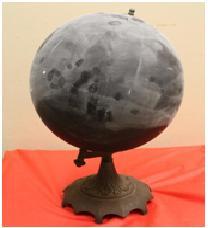
A.1(2) – Terrestrial Globe
Three-dimensional scale model of the Earth. This globe features a raised-relief surface for easy notation of mountain ranges. Land formations are set against traditional light blue oceans, and feature bright, varied colors that clearly denote countries, regions, states. The globe is set in a metal base with a metal semi-meridian, each features a gold-tone finish.

A.1(3) – Celestial Sphere
a spherical representation of the celestial sphere showing the apparent positions of the stars and constellations in the sky.

A.1(4) – Celestial Star Globe
This globe shows constellations adn other cosmic phenomena in 3-D formatMounted on a full horizon and meridian base, the 12-inch star globe andd the 4-inch world globe may each be rotated independently. The meridian may be tilted to adjust the globe for latitude while the horizon ring indicates the actuak horizon in relation to the point of observation on Earth.

A.1(5) – Orrery
A device that illustrates the relative positions and motions of the moons and planets in the solar system.
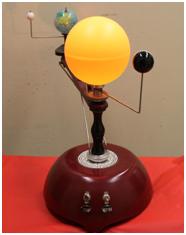
A.1(6) – Potential Well
The surface of this “potential well” is shaped as to produce an inverse square gravitational force. Giving a small ball a tangential velocity near the outer radius of the well, one can create elliptical orbits.

A.1(7) – Lava Lite Lamp
The lava lamp illuminates and heats up a blue solution containing lava that changes patterns constantly. A 40 watt appliance light bulb is used to heat up the lava at the base of the lamp. As the lava heats up, its density is reduced and the lava travels upward. When the lava reaches the top of the vessel, it starts to cool down, causing its density to increase and move back down toward the light bulb.
Note: The 16 inch Lava Lamp requires at least 2 hours for setup. The 27 inch Lava Lamp requires at least 6 hours for setup.

A.1(8) – Phases of the Moon
This model demonstrates the various phases of the moon, and comes with a built-in light sensor that illuminates moon when the room gets dark. The phases of the moon can be controlled either automatically or by a remote control to show 12 phases of the moon. A 15-minute audio CD provides a guided tour to the moon and can be requested. This demo also includes an auto shut-off to preserve battery life.
Click here to see a video of the Phases of the Moon demo.

A.1(9) – Mars Globe
The beautiful portrayal of the Martian surface was created from 6,000+ highly detailed images acquired by the Viking Orbiter in the 1970’s. Digital specialists combined highly detailed monochromatic images with a low-resolution global mosaic that approximates Mars’ true color and emphasizes brightness variations in its surface. The globe portrays the planet at a scale of approximately 1:22,250,000 and includes about 140 named features approved by the International Astronomical Union.
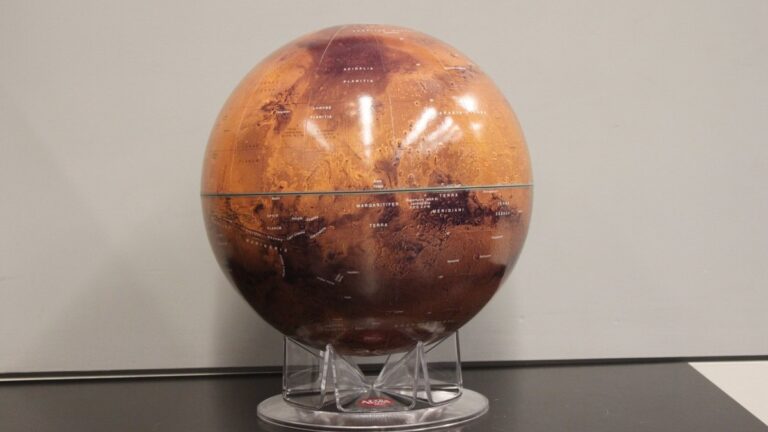
A.1(10) – Moon Globe
Developed under the auspices of NASA, this 12″ moon globe depicts the first Apollo manned landing site along with the first U.S. and Russian unmanned landing sites. The “seas,” craters and mountains give this globe a three-dimensional appearance. The molded plastic base allows for classroom display.
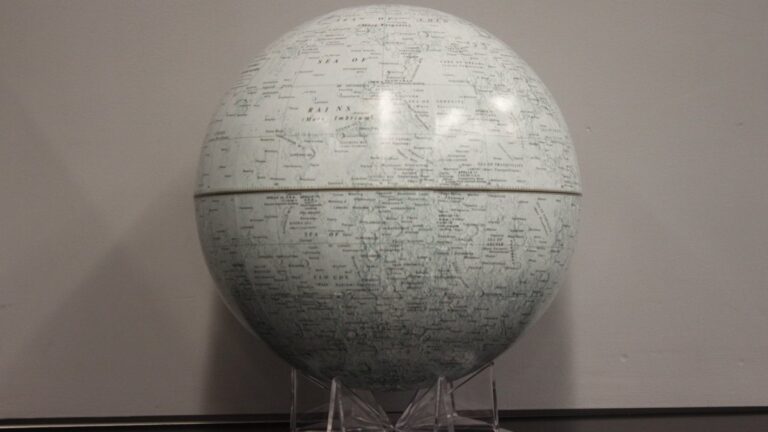
A.1(11) – Venus Globe
This 12″ diameter globe shows the surface of Venus as revealed by more than a decade of radar imaging that culminated in the 1990-1994 Magellan mission.
The Magelan spacecraft mapped more than 98% of Venus at a resolution of about 100 meters. A mosaic of the Magellan images forms the base map. Gaps in coverage were filled with images from the Soviet Venera 15 and 16 spacecraft and by radar images from the Arecibo Observatory in Puerto Rico.
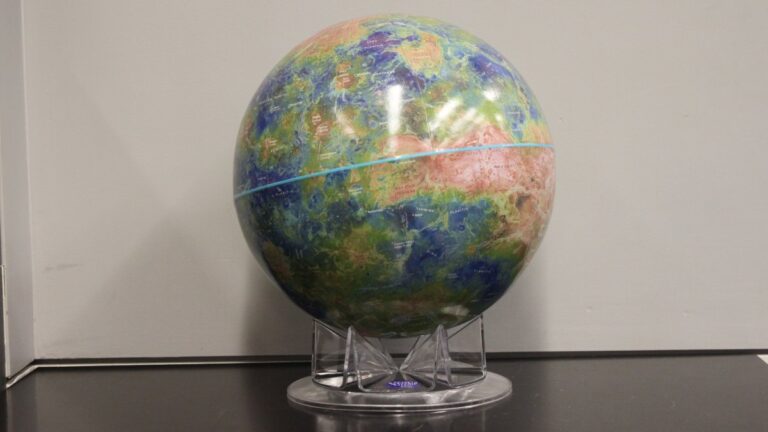
A.1(12) – Solar Motion
Demonstrate the apparent motion of the sun across the sky, for any day of the year and for any latitude in the Northern hemisphere. This unique activity allows students to make their own demonstrator and use it to answer questions such as:
• Where will the Sun rise or set?
• Why does Earth have seasons?
• When are day and night equally long?
